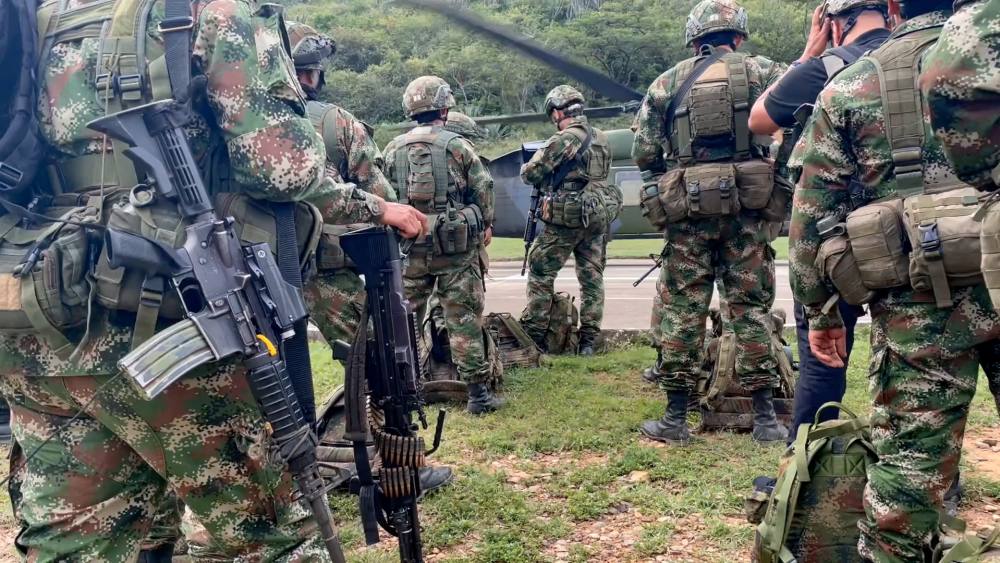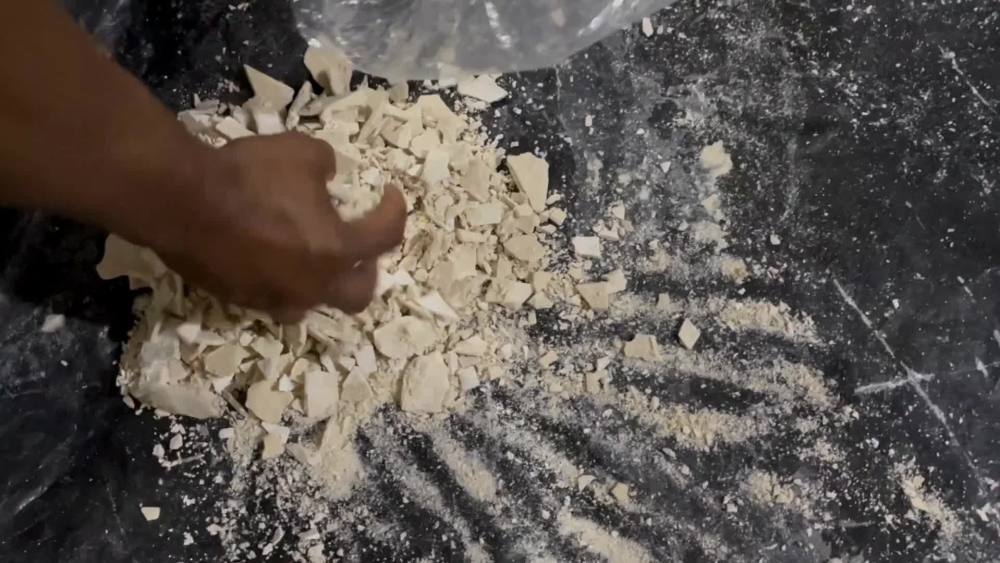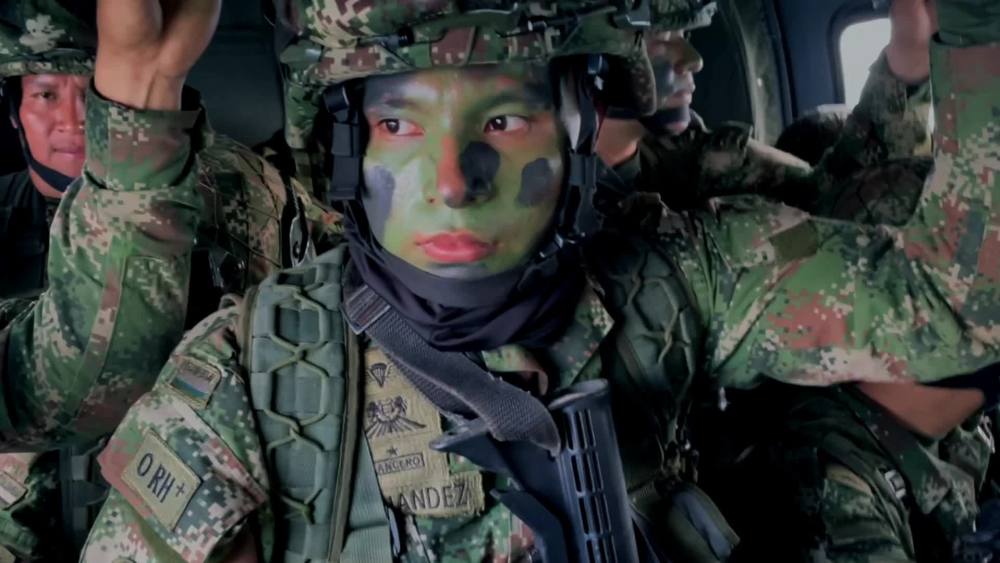Includes sensitive content
I have been working as a photojournalist in Colombia for more than 15 years. I have documented the brutal civil war here as well as the aftermath of the 2016 ceasefire that ended it. Over that time, in every corner of the country, conversation has almost always drifted to one topic: cocaine.
Colombia is the world’s largest cultivator of coca plants and the biggest producer of the illegal stimulant made by processing them. For many Europeans and Americans, cocaine is a party drug. For Colombians, cocaine is blood and violence, corruption and death.
This year, I travelled the country to chronicle the drug trade in all its aspects. My guides were tenant farmers, labourers, social workers, police officers, gangsters and ordinary Colombians, who want us to have a deeper understanding of their country than can be found on television.
Some put their lives at risk by speaking to me.
The village of Pueblo Nuevo, in Antioquia, is located a long day’s drive from the provincial capital of Medellín. The last military checkpoint is about an hour and a half from here. Beyond, you need to negotiate with whomever is in control at the moment for permission to enter. There’s little infrastructure, lots of poverty.
I met Ariel Albeiro Muñoz, 19, picking coca leaves as a day labourer. Muñoz said he didn’t use cocaine or care much about politics; he just wanted to earn enough money to buy a motorbike.

Muñoz (far right) told me most people like him don’t want to be involved in any kind of criminal activity. But when they’re given the option to earn twice as much for picking coca as for picking coffee, which is basically the same work, it’s almost impossible to say no.

These workers began at 5am, each one collecting about 70kg of coca leaves, for which they were paid about $10.
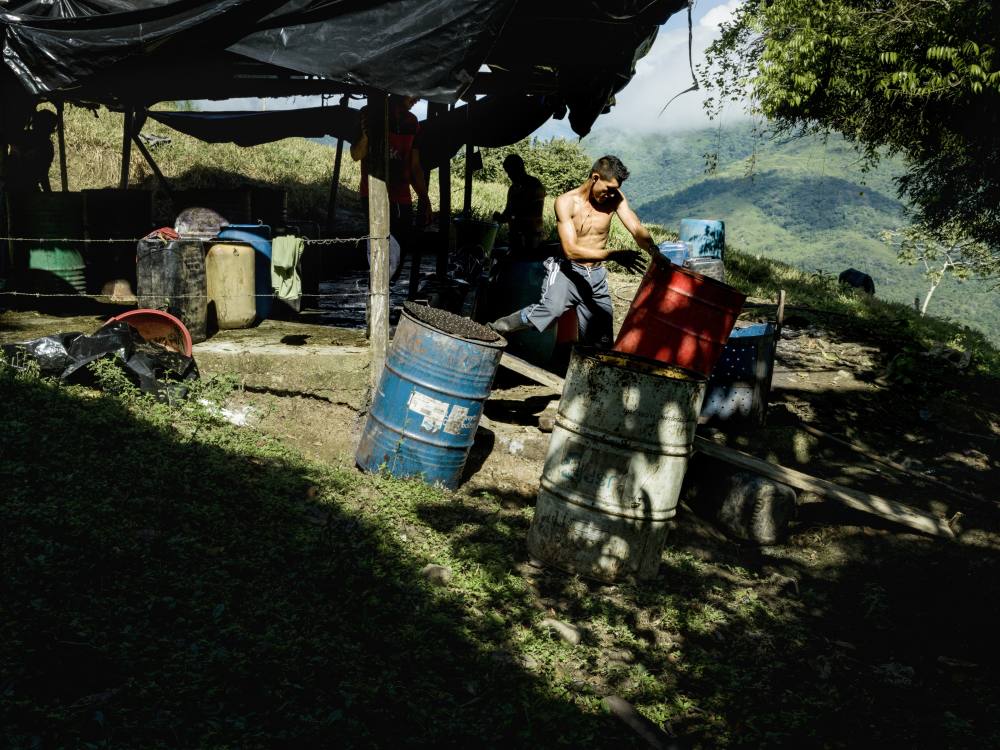
Andres Hernandez, 26, another one of my guides, said he started as a farmer and was taught how to set up and run a lab to produce base de coca, the first phase in the process of turning coca leaves into cocaine.
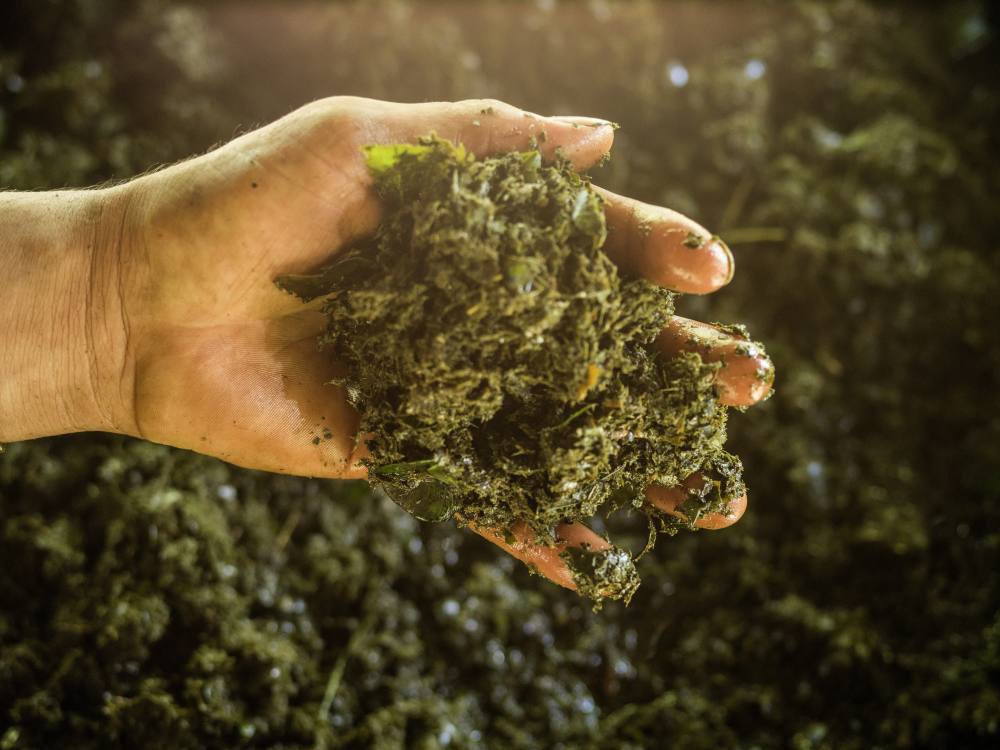
Coca leaves are soaked in a toxic mixture containing, among other things, gasoline. It takes 600kg of coca-leaf to produce 1kg of cocaine paste, which is sold for about $600 USD.
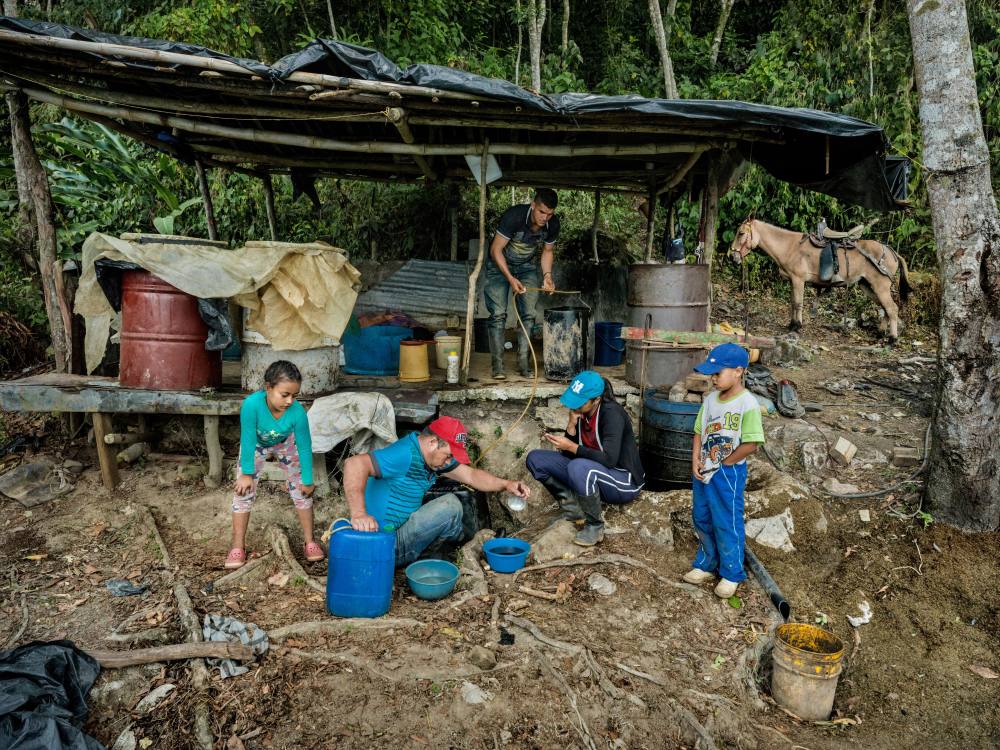
Hernandez was teaching his methods to Martín Osorio, 36, and his family. There are two kinds of laboratories in the jungle. Osorio’s was one of the more basic. Labs that turn the paste into cocaine hydrochloride, the powdered form, require more technical skill. They are usually run by organised crime syndicates rather than small-scale farmers.

Martín Osorio’s daughter, Diney, napping on the floor of her father’s cocaine laboratory.
I’ve worked in active war zones where I felt safer than I did in Potrero Grande, a neighbourhood in the city of Cali. You sense the presence of police once in a while, but you know they’re not in control. Every little street belongs to a different group — and those lines move constantly.
As an outsider, you need permission to enter or a neutral intermediary, in this case my friend who had lived and worked in the area for years. I was introduced to a group of twentysomethings, all of whom said they made a living from robberies, drug trafficking and, occasionally, assassinations.
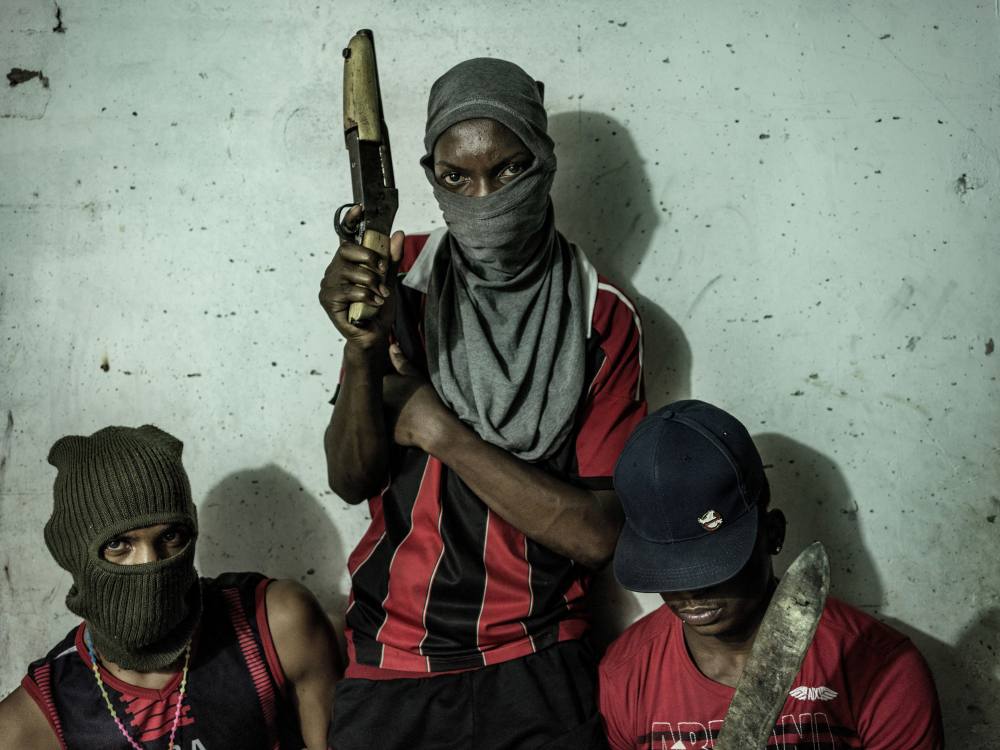
Brian (right) said that at one point he carried out assassinations every week to pay for his drug habit. “There are no jobs for us,” he said.
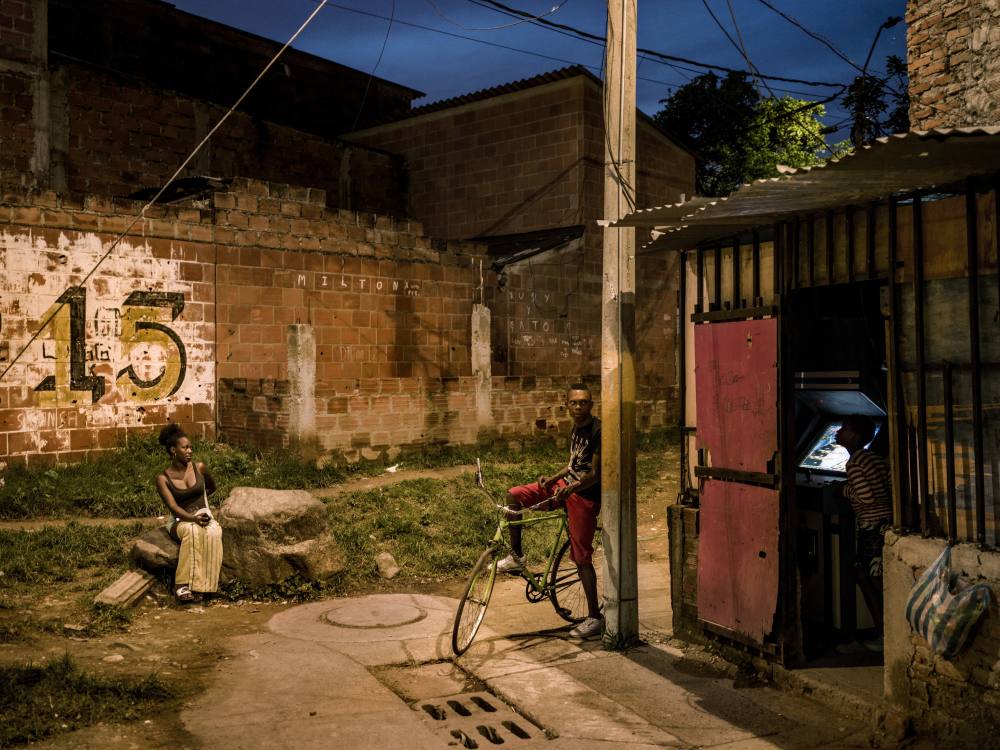
A woman selling cocaine on a street corner. Graffiti behind her references the number 15, part of the name of a local gang.

Charmuco, 23, a gang member in Potrero Grande snorting cocaine.

Nasly Martinez, 19, with her one-year-old daughter at the funeral of her former partner, Alvaro Steven, 20. Steven was shot four times at close range. The murder was assumed to be an act of ajuste de cuentas, violent street justice, allegedly as revenge.
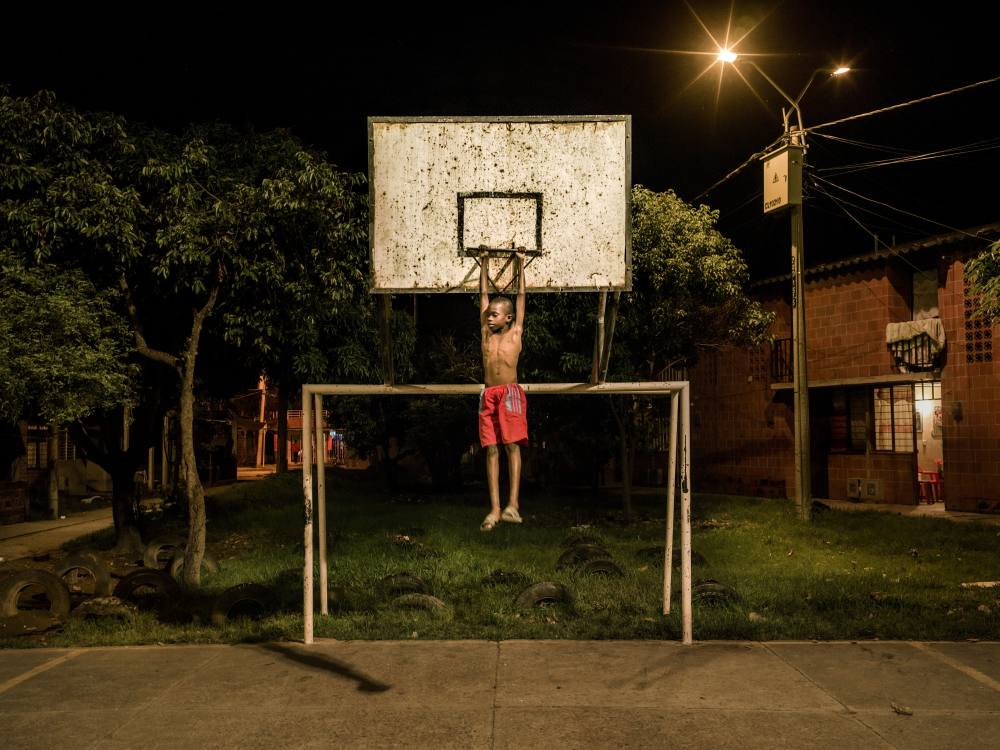
Didiller Angulo, 9, hangs from a basketball hoop in the same square as the woman selling cocaine.
Since 1999, the Colombian government and the US have jointly spent billions of dollars annually attempting to reduce the production and trafficking of illegal drugs and to improve security conditions in Colombia.
A lot of the money went to training and arming the Colombian military and police. In October, I joined Los Comandos Jungla, the special police forces, on a series of raids. Their mission was to destroy cocaine labs.
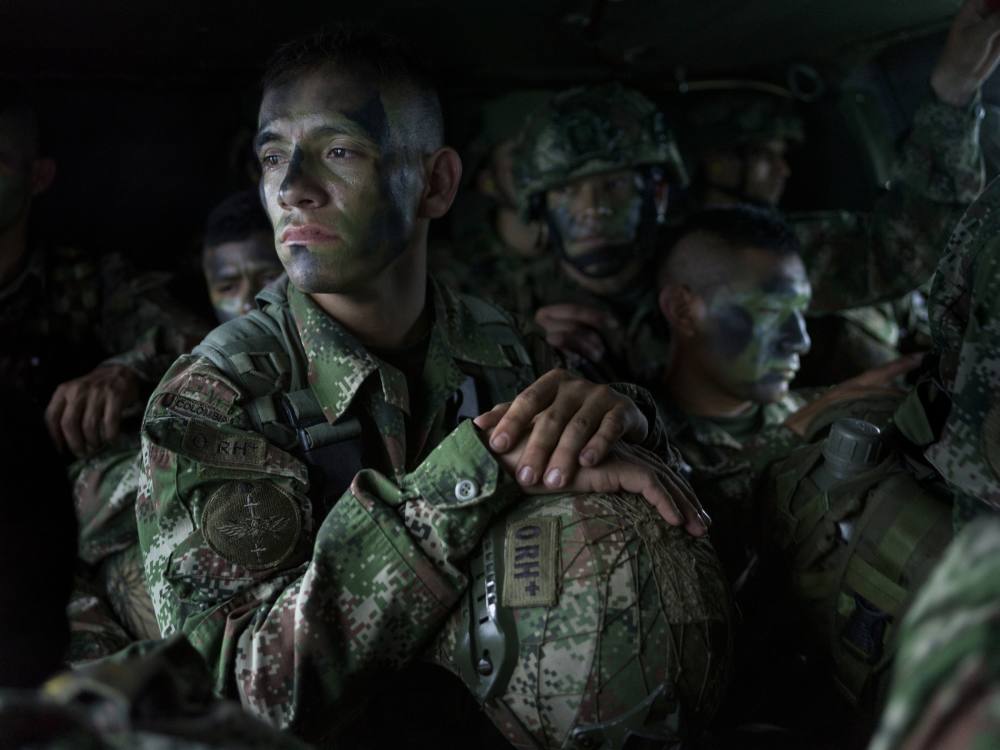
We flew from Tuluá for about 25 minutes. Because ambushes are common, helicopters travel in groups, one hovering above while another touches down for soldiers to disembark.

At the first location, I stayed in one of the airborne helicopters and watched the troops working on the ground.

At another site, the helicopter I was in landed in a river basin, and we trekked up a mountainside, where soldiers discovered a second-phase lab — a high-value target.

The lab was deserted as was an adjacent dormitory, with beds for about a dozen people. There was a small kitchen and barrels of chemicals for cooking cocaine and burners and microwaves for drying it. As one group of Comandos rigged the lab with explosives, another took chemical samples.

When they were done, we made our way back to the river bed. The helicopter came down and barely touched the ground as we boarded. Pilots hate landing, because they’re in shooting range. We took off and the soldiers detonated the explosives. The operation that day destroyed five laboratories.

Jesus Bautista, a 25-year-old soldier, was wounded when he stepped on an anti-personnel mine. The incident occurred during fighting with dissidents in Catatumbo. He lost all sight in his left eye as well as his left leg from the knee down.
This summer, Colombians went to the polls and elected Gustavo Petro as president, rejecting decades of economic and drug policy. “It is time for a new international convention that accepts that the war on drugs has failed,” Petro said in his inaugural address.
He has promised a new approach, including exploring a government-regulated cocaine market and ending “prohibition” around the drug, which has ensnared the lives of so many ordinary Colombians.

At Kennedy Police station in Bogotá, the jail was overflowing into temporary tents. Here, some 120 people were awaiting the next step of the judicial process. The entire station was staffed by eight officers.

Juan Pablo Mejía, 26, did not fit my image of a smuggler. He was calm, smartly dressed, not at all ostentatious. His destination was Madrid. But as the police looked at his body scans, they noticed objects in his stomach.

11 of the 13 capsules of cocaine that Mejía was carrying, with a total street value of about $60,000.

I watched the life drain out of his face the moment he knew he was caught. He said he was the sole earner supporting his mother, until he lost his job. He borrowed about $1,000 from loan sharks and fell behind on repayments; threats followed, unless he did “this one thing”.

“I’m not that type of guy,” Mejía said. Given his one phone call, he couldn’t bear to tell his mother what had happened. The police officers told me he was likely facing a prison sentence of several years.
